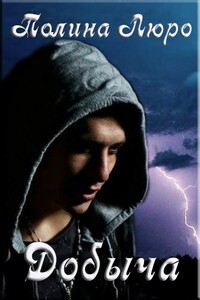Delta Green - [3]
The explanation was simple enough. The MakoShark was invisible to radar.
Every facet of stealth technology had been utilized in her construction. The internal ribs of her wings and fuselage were cast of honeycombed carbon-impregnated fiberglass that reflected radar probes at odd angles, and not back to the radar transmitter. The skin of the craft was also carbon-impregnated plastic and was coated in a midnight blue paint containing microscopic iron balls which conducted electricity and deterred radar reflection. Instead of bouncing back, radar signals slithered around on the surface of the MakoShark. The radar cross section (RCS) was so slim that the craft had to be within five miles of a powerful conventional radar before she returned a signal the size of a California Condor, and that signal was weak enough to go unnoticed.
The turbojet engines were not directly behind the intake duct; they sucked their air supply from an upward-curving tunnel. In that configuration, the spinning turbine blades were diminished as radar reflectors. To limit the RCS additionally, the turbojet blades were not made of metal. They were plastic, combined with carbon fiber for strength. While some designers had experimented with engines made of ceramics — not detectable on radar — the MakoShark’s designers had elected to stay with the more reliable and higher output metal-encased engines, which were enclosed in a honeycombed structure that diffused and absorbed radar probes.
The jet engines were mounted nearer the forward end of long nacelles, and their exhaust was channeled slightly downward in another curving tunnel that was wrapped with tubing carrying Freon gas. The refrigerant cooled the exhaust considerably, so that by the time it exited the exhaust pipe, its infrared signature was practically nonexistent at seventy per cent throttle settings. Infrared tracking sensors just might pick up a small signal at ninety per cent throttle, and would at a hundred per cent.
The rocket motors were mounted inboard of the jet engines, in the same nacelles, and were also protected from radar by the honeycomb layer.
“Maybe we could do Palm Springs tonight, jefe? Or Vegas? We haven’t been to Vegas in a long time.”
“If we don’t pull off this attack, Tiger, the CO will fire us, and then we can’t afford Palm Springs.”
“Good damned point, Snake Eyes. I’ll make sure my computer is counting right. You happen to see Needles, go to three-oh.”
McKenna saw Lake Havasu first, retarded his throttles, and began a slow descent. The speed came down to Mach 1.8.
He dialed in a Denver radio station on the Nav/Com radio and used it to verify the position reported by the inertial navigation system, which obtained its information from the NavStart Global Positioning Satellite system. Using triangulating information from at least three of the eighteen satellites in the GPS system, the computer usually knew within a few feet their exact position on the globe.
As usual, the MakoShark’s brain was correct. The coordinates were printed at the lower edge of the HUD, to the right of the readout for the craft’s heading.
078 34° 55’ 14” 114° 49’ 55”
At the top of the HUD, the crucial data of speed and altitude were dominant figures. By the time the Grand Canyon crossed beneath them, he had reached Mach 1.5 and thirty thousand feet of altitude.
“Take a big, lazy S-turn, Snake Eyes, and bleed off another tenth of a Mach, then go to heading zero-seven-four. We’re ahead of schedule.”
“Always hated being late for a date,” McKenna said.
The sun was behind them at 3:15 P.M. when they crossed the Colorado border west of Durango. As soon as he passed over the 14,000-foot Mount Wilson, McKenna eased the throttles back. The velocity rolled back until the Mach numbers on the readout changed to knots. He didn’t want to leave a sonic footprint.
Easing the side-mount stick, which was computer-adjusted for the tensions McKenna favored forward, he put the MakoShark into a shallow dive.
“Unless you want C. W. McCall to see us, Kev, you’d better grab a couple points to the right.”
The man who had given the world “Convoy” and “Wolf Creek Pass” was the mayor of Ouray, Colorado.
McKenna banked to the right to give Ouray plenty of room and lined up to the right of Uncompahgre Peak. The MakoSharks were only infrequently brought into populated areas during daylight hours since, despite all of their stealthy characteristics, they were still visible to the naked eye, and they were still mostly classified.
The Uncompahgre National Forest came up quickly on the left, a thick blue-green blanket of Ponderosa Pine and Blue Spruce peppered with the pristine white of the year’s first snowfall a week before.
When the peak lined up with the craft’s left wingtip, which was actually the slanted-up rudder, Munoz said, “Target four-five miles, beadin’ zero-zero-five. Put her on the deck, jefe.”
McKenna could have used the terrain-following radar on his invasion of the mostly deserted Gunnison National Forest, but that might have taken the fun out of it. He rolled hard to the left, pumped in some rudder, and dove toward the earth, pulling out on a northerly heading.

В книге рассказывается история главного героя, который сталкивается с различными проблемами и препятствиями на протяжении всего своего путешествия. По пути он встречает множество второстепенных персонажей, которые играют важные роли в истории. Благодаря опыту главного героя книга исследует такие темы, как любовь, потеря, надежда и стойкость. По мере того, как главный герой преодолевает свои трудности, он усваивает ценные уроки жизни и растет как личность.

По Стокгольму проносится волна похищений состоятельных людей. Однако внушительное богатство жертв – единственное сходство между ними. Детектив Ванесса Франк, несмотря на свое отстранение от службы, кидается в самую гущу событий. Ведь для нее работа – смысл жизни! Расследование приводит ее в далекую «Колонию Рейн», поселение на юге Чили, основанное беженцами из фашистской Германии. Но вскоре Ванесса понимает, что оказалась втянута в опасную игру, которую не в силах контролировать…

Хоррор-повесть «Тьма». Обычный вечер понедельника. Квартира. Муж и жена. Двое девочек. Семья готовится ко сну. Но внезапно бесследно пропадает супруга. А после и дочери…


